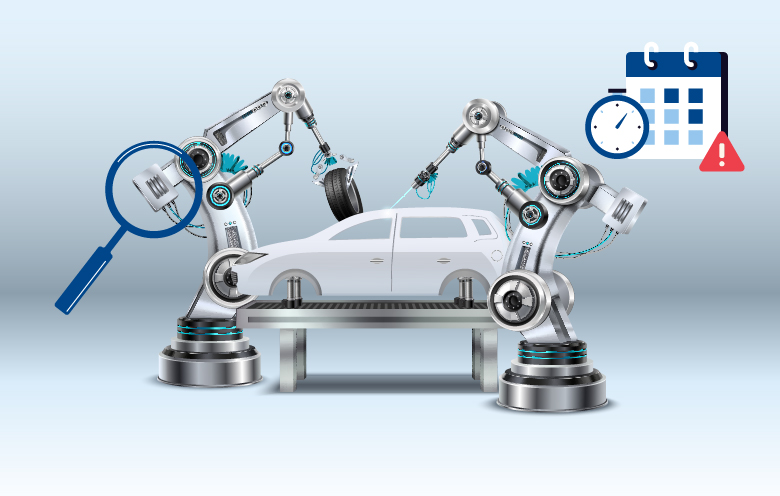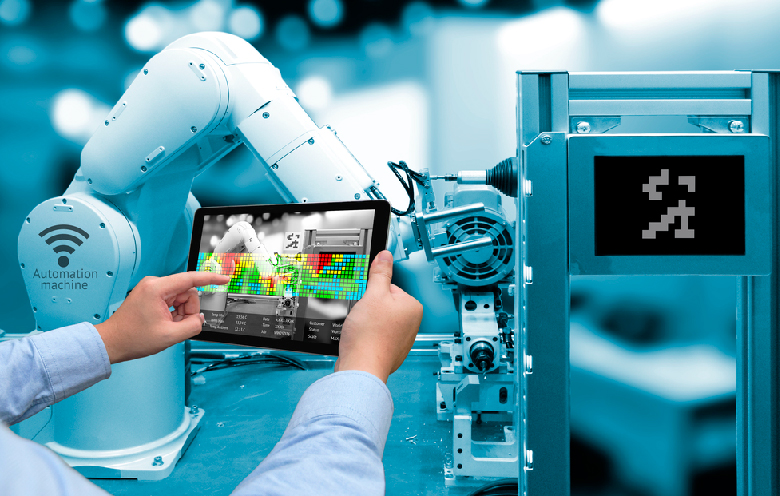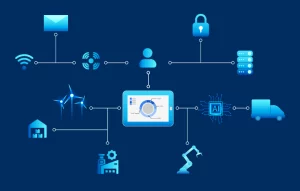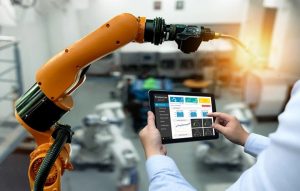Digitalization is helping manufacturers to improve product quality, expand offerings and lower maintenance costs. Once you start to meet your organizational goals, the only way to achieve scalability is through digitalization.
All the forward-thinking business owners in the manufacturing industry are leveraging technology, to meet their goals faster and more efficiently while still leaving room for expansion. We are aware that digitalization in the manufacturing industry can yield fruitful results, like:
- Making a company future-ready
- Giving the company a competitive advantage
- Accelerating the manufacturing process with automation
- Building a cost-effective ecosystem
After deciding to use innovation and technology to achieve your long-term business goals, the next step is to develop a strategic plan to overcome the potential challenges. To help you at this stage, we have compiled the list of common challenges of digital transformation in manufacturing and their respective solutions. Let us take a quick look at them.
Initial capital expenditure
When we think of digital manufacturing, one of the questions that come to our mind is the capital investment needed. Digital transformation demands a significant investment and prior planning before embarking on its phases of implementation.
Ways to overcome the challenge:
- Have a rough estimate of the capital expenditure and revenue you can expect to generate after digitally transforming your enterprise, for better decision-making.
- Analyze the estimates based on the urgency, impacts of digital transformation, risks involved and financial resource capacity, once it is ready.
- Prioritize the expected return on investment (ROI) from digital transformation. Decision-makers can seek the help of a company’s CIO to link investment dollars to future profitability.
- Allocate funds across multiple departments based on the value each department can bring to the business’s success post-transformation.
- Calculate anticipated incremental revenue or cost savings, as well as other variables involved in future forecasting and comparisons.
- The total capital expenditure should be in line with the company’s futuristic goals.
Our professionals can help you create a well-laid execution plan that includes the calculations mentioned above, to make savvy business decisions.
Lack of digital awareness
Without a doubt, the arrival of machines has simplified manufacturing. However, is it sufficient to remain competitive in the market?
The digital era has encouraged manufacturers to use technology to streamline and improve the manufacturing process by installing smart devices. With so many technologies on the market, there’s a good chance you’re not aware of all of them and can’t decide which one is the best fit for your needs. Depending on your requirements, you can choose from the following technologies:
- Artificial intelligence (AI) and machine learning (ML)
- Cognitive computing
- Data visualization or data analytics
- Cloud computing
- Internet of things (IoT)/ sensors
- Immersive experience – MR, AR, VR
- Digital twin technology
- Process automation
Ways to overcome the challenge:
Exposure to new-age innovations aids you in deciding the right technology to use for creating the maximum impact on your business. Manufacturers who lack relevant technical knowledge can seek expert guidance from digital transformation consulting services providers in assessing their current manufacturing process and guide them with technology purchases.
For example:
Assume that you want to avoid unanticipated machine breakdowns. The question now is: which of the technologies listed above will you consider adopting to prevent this?
The answer is: data analytics and data visualization. When machine sensor data is combined with statistical and artificial intelligence methods, it is possible to predict the likelihood of a machine malfunction and generate an alert as a result.
You will only be able to figure this out if you are well-versed in all technologies. That’s where our experts come in, helping you match the appropriate technologies with your business needs to achieve your long-term goals.
Determine your company’s readiness to accept change
In the simplest term, digital manufacturing will result in the automation of nearly all manufacturing processes, resulting in job losses. Employees, whether they are lower-level managers or workers, start to worry about this, which makes them resistant to change.
Ways to overcome the challenge:
It could be difficult at first to encourage employees to cooperate as it needs a complete shift in the company’s culture. Cultural change can take time. Therefore, it is best to collaborate with other leaders to create an ecosystem where individual ideas are encouraged, and change is embraced.

When technology replaces people’s jobs with machines, it opens new opportunities for employees elsewhere. Employees will need to be re-trained to adapt to the new digital setup. For example, re-training may include:
- Production line configuration
- New robotic operations
- Cloud-based resource management
- Setting up of network and data security team
Building a trustworthy environment can assure employees that the change is for the better and will positively upskill them.
Legacy infrastructure modernization
Digital transformation needs fast computers, high-speed internet and cloud infrastructure. To establish such a framework, manufacturers would have to make hard choices about letting go of old legacy systems for future growth.
Legacy system modernization can be extremely complicated because it requires certain intermediaries to consider, such as budget, stakeholders and employee skills.
Ways to overcome the challenge:
To begin, a company can conduct an overall assessment to determine whether it is time to retire certain legacy systems and how much value can be generated by replacing them with new technology. A company should follow a carefully tested and piloted approach when upgrading its entire production facility.
Start small by prioritizing the areas or departments that need the most transformation to create a remarkable impact. Machine predictive maintenance can be prioritized because timely alert notifications can result in significant cost savings and a boost in ROI.
Click here to know how this aviation company leveraged app modernization to achieve operational growth.
Cybersecurity concerns
Newly installed smart factories are vulnerable and hence, more prone to cyber-attacks. Integrating new systems with existing cybersecurity protocols is one of the most difficult challenges of digital transformation.
Ways to overcome the challenge:
A company needs a sound cybersecurity plan that not only helps improve cybersecurity protocols, but also mitigates future risks. Keep the following points in mind as you plan your cybersecurity strategy:
1. Understand the critical information assets that must be protected.
2. Comprehend the flow of information throughout the organization.
3. Identify risks if the information is compromised or lost.
This sets the foundation for how a company addresses risks. Once this foundation is laid, it is easier to assign management roles, develop secure procedures and implement appropriate safety measures.
Make a move today for a better tomorrow!
Digital transformation entails more than just implementing new technology; it also entails providing more value. Manufacturers should identify the key areas of value creation that can be enhanced. With this knowledge, strategic investment is required for maximum ROI. To address the challenges of digital transformation in manufacturing, a company must implement a strong strategy in place as well as be prepared for any contingencies.
Choose Softweb Solutions, an experienced transformation partner with a team of qualified digital experts in DevOps, AR, data analysis, app modernization and other technologies. Through an integrated and customized approach, we have successfully assisted manufacturers all over the world in overcoming their digital transformation challenges. Talk to our experts to take your first step toward digitalization









